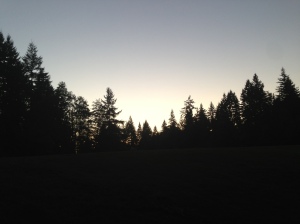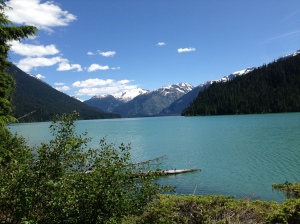
John among the Laurels
Week 3 has been a breakthrough week for me. When I started my eight-week mindfulness meditation course, I suspected that it would eventually help alleviate my chronic pain. However, I did not expect that help would come as soon as this, and in such a dramatic fashion.
First, a quick update on my ongoing struggle with scheduled daily meditation times. I have decided that it actually worked better for me to not have a schedule. This past week, I have been doing my daily meditations when the need arises and when time allows. It’s working fine so I will leave well alone.
This week’s meditations enabled me to take the enhanced awareness that I gained from my first two weeks and integrate it more closely into my daily life.
I completed three meditations daily – eight-minutes of Mindful Movement, eight-minutes of Breath and Body, and The Three-Minute Breathing Space meditation.
My Mindful Movement meditation consists of four interlinked stretching exercises. They are all beautiful in their simplicity. When put together, the total experience is soothing and profound.
Of particular note is a set of body stretches, where you reach upward with your arm outstretched as if you were picking fruit from the branch of a tree. As you return your arm back to your side, you are invited to mindfully observe your hands and fingers as they slowly move downwards.
Personally, I loved this experience. It gave me a heightened sense of body awareness and encouraged a child-like sense of curiosity. It was as if I had never seen my hands before. One has to experience it to fully understand.

My Breath & Body meditation spot – Noons Creek
I usually did my Breath and Body meditation straight after Mindful Movement as recommended in the book. It worked really well given my already heightened sense of body awareness.
Sitting in a comfortable position on a chair, I initially spent a little time noticing the sensations of my whole body. Then I focused in on my breathing. Gently reminding myself that there is no right or wrong way to feel, I then simply observed my body and breath sensations that were there in the moment.
When my mind wandered away from the breath, as it does, to planning, remembering, worrying or daydreaming, I acknowledge where my mind had wandered to and then gently escorted it back to my breath and the moment.
If I felt any physical discomforts while sitting, I would either mindfully adjust my body position accordingly, or focus my breath towards the area of discomfort. Both of these techniques brought noticeable relief.
Near the end of my meditation, I sat in the silence, focusing on my breath, fully aware. It was as if my whole body was breathing. The experience was sublime.
As I finish this meditation, I am reminded that reminded that the deepest stillness and peace does not arise because the world is still or the mind is quiet. Stillness is nourished when we allow our body, our mind, and the world around us to simply be just as they are – moment-by-moment and breath-by-breath.
As for The Three Minute Breathing Space, I have become especially fond of this meditation this past week. It’s designed to be used as needed and I have therefore used it quite frequently over the past week.

The Three-Minute Breathing Space spot – Noons Creek
However, the first time I experienced it was totally unplanned and what happened will remain with me always. Let me share the story with you.
Last Sunday, I drove out to the nearby Pitt River Dyke for my usual weekend long run at around 6:30am. I felt the need to get out and run despite having a bad migraine headache, so I took an extra-strength Advil and hoped it would pass.
The Pitt River Dyke is one of my favourite runs, since it offers some stunning views of the mountains and the river from the trail. There’s also an abundance of wildlife to be seen along the way.
As I ran along the winding trail by the slough that leads to Pitt River dyke, my headache was now getting worse. I am quite familiar with migraine headaches since my 2010 concussion injury. However, this one was now severe and my peripheral vision was blurred. I was understandably concerned for my health.
I was considered turning back when I reached the Pitt River. However, the trail turned and I was presented me with a beautiful river and mountain vista that lifted my spirits and soothed my headache somewhat.
It was a gorgeous morning and the air was fresh and sweet. I scanned the vast blueberry fields that run all the way on the other side of the dyke from the river. I was hoping to see a black bear or two as they are commonly seen feasting on the berries. Alas, there were none to be seen.
“I’ll just do another kilometre or so, and then I will turn for home”, I thought, as I admired the river’s wide expanse flowing gracefully towards the mighty Fraser.

Mountains and river – Pitt River Dyke
Then I turned my head, looked down the trail and saw before me the largest black bear I have ever seen just a few hundred feet ahead of me, slowly meandering in my direction.
Delight was my first reaction, although I do know that it’s unwise to get too close. After watching the bear stop and have some blackberries from the bushes along the trail, I decided that it would be prudent to turn around and head back.
However, I just had to take my ear buds out and get a quick photo with my iPhone for the kids. As I headed back along the trail, I must admit that I did a few shoulder checks. I know that bears can run a lot faster than I can. Fortunately, he seemed totally preoccupied with eating the blackberries.
As I continued back down the path, my head and vision were a little better for the vistas and my bear experience, but still very much there.
It had so far been an eclectic morning from a musical perspective. I had set my iPhone songs on ‘random choice’. I had never done this before and it had been interesting to say the least.
The music ended and I was wondering what was next. Then, to my absolute surprise, I was suddenly listening to The Three Minute Breathing Space meditation through my ear buds while I was running!
I was caught totally off guard but immediately went along with what was now happening in the moment. Why not, I thought.
Led by my trusted meditation guide, I continued my run down the trail for the first minute, mindfully observing the river and the blueberry fields while becoming increasingly aware of my innermost thoughts, feelings and body sensations.
For the second minute, I gathered and focused my attention on the breath and the body sensations felt while breathing. During the third minute, I expanded my attention and my field of awareness to the entire body.
“Wow”, I thought. “In just three euphoric minutes, I am fully aware, mindful and grounded in the present moment, and accepting of my life as it is right now.”

By the still waters – Port Moody Inlet
Even more amazing to me was realizing that my vision was now clear and my migraine headache had totally disappeared!
I was “running on air without a care, in the moment”, all the way home.
Looking back, I have found that a well-managed running program works well for self-managing chronic pain associated with my ongoing concussion symptoms. Now I have discovered a new and significant addition to my chronic pain self-management tool kit – Mindfulness Mediation.
What’s also exciting is that Mindfulness Meditation will likely improve many other aspects of my health and well-being; indeed, all aspects of my life – moment-by-moment, breath-by-breath.
As for the future, the positive impacts of mindfulness meditation on chronic pain are evidence-based and well documented. Therefore, I envision that it will soon become universally recognized as an essential part of everyone’s chronic pain self-management tool kit.
Thank you again to Professor Mark Williams and Dr. Danny Penman for writing the book that inspired me to start on my exciting eight-week Mindfulness journey.
You can find out more about their book “Mindfulness: An Eight-Week Plan for Finding Peace in a Frantic World” at http://www.franticworld.com.
Of special interest to me right now is that Dr. Penman has written an exciting new book, along with co-author Vidyamala Burch, that’s entitled “Mindfulness for Health: A practical guide to relieving pain, reducing stress and restoring wellbeing”.
Their new book will be available on September 5th, in the UK at least. I am looking forward to reading it with great enthusiasm.
Meanwhile, I will be starting Week 4 of my eight-week Mindfulness course on Sunday and I look forward to sharing my experiences with you in my next blog.
Namaste,
John

John Murphy is a volunteer Program Leader with the University of Victoria’s Centre on Aging, based in Ladner, BC. He currently facilitates their 6 week Chronic Pain Self-Management workshops (2½ hour per week) available free of charge across BC, to adults and caregivers who are dealing with chronic pain.
For more information on our Chronic Pain Self-Management workshop and other free of charge workshops, follow this link to our website:
http://www.selfmanagementbc.ca
Other Self-Management workshop and programs include:
– Arthritis and Fibromyalgia
– Chronic Disease
– Diabetes












































